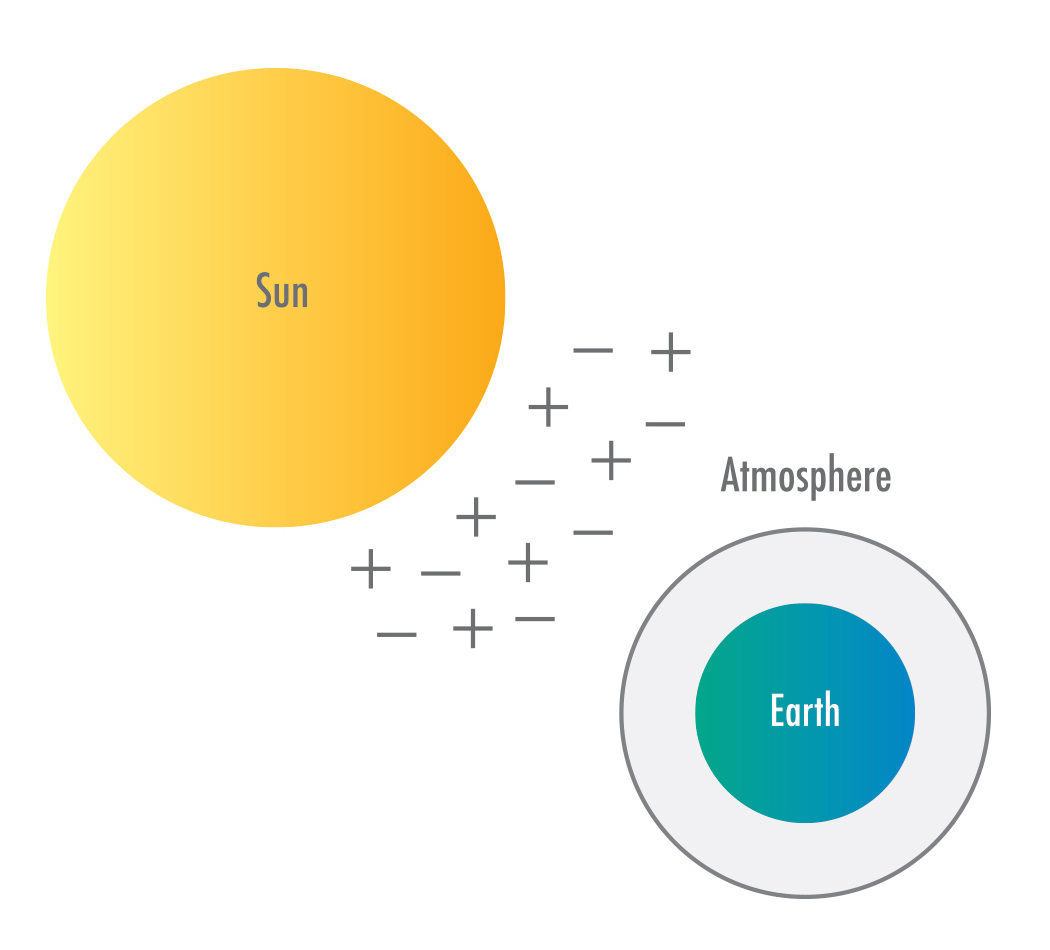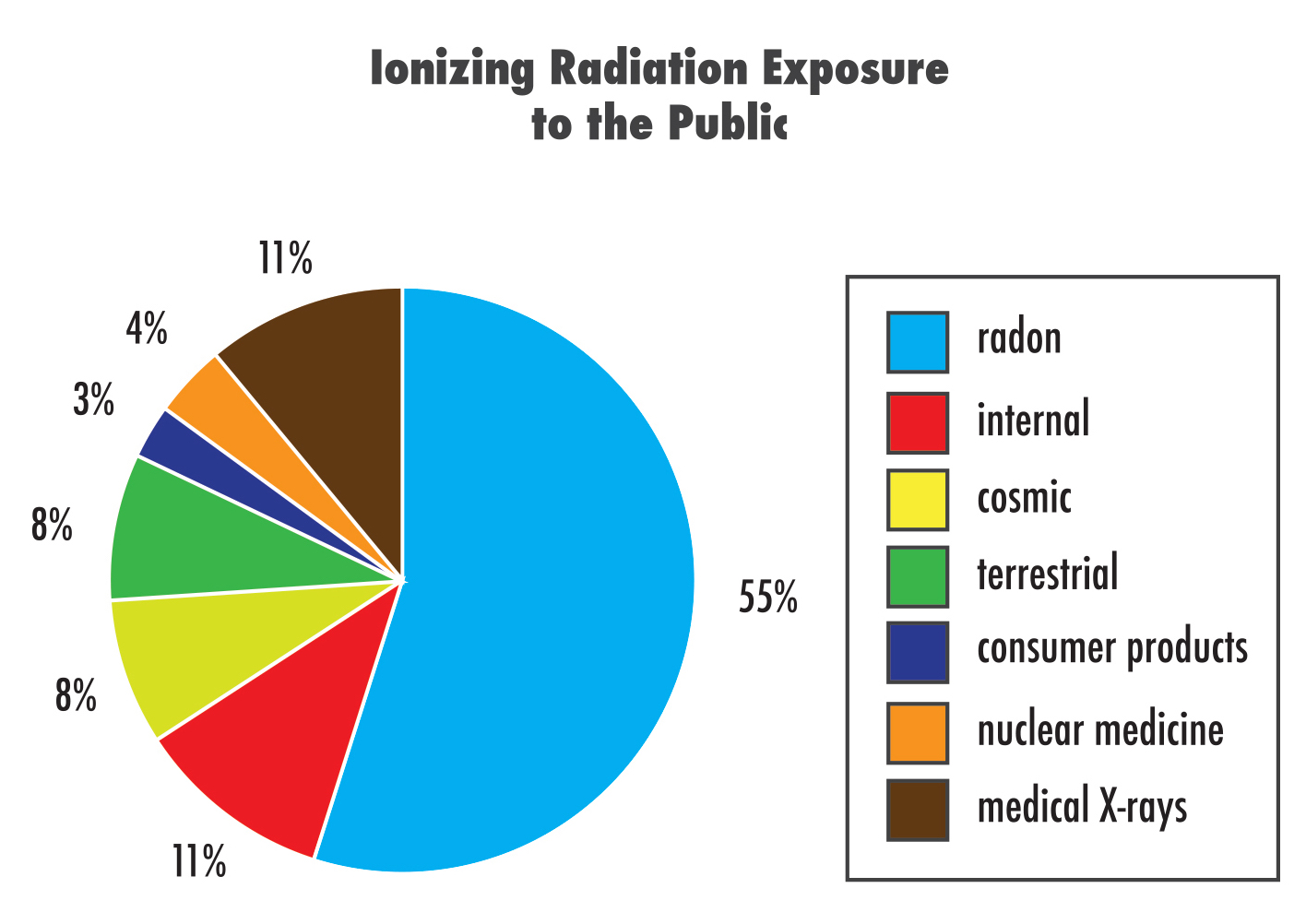Since the beginning of time, all living creatures have been exposed to radiation. We live in a radioactive world. There are many natural sources of radiation that have been present since the Earth was formed. In the last century, we have added somewhat to this natural background radiation with artificial sources. However, the naturally occurring sources contribute about four to five times more radiation than human-made sources.
The three major sources of naturally occurring radiation are:
- cosmic radiation;
- sources in the Earth’s crust, also referred to as terrestrial radiation; and
- sources in the human body, also referred to as internal sources.
Cosmic Radiation
The Earth and all living things on it are constantly bombarded by radiation from space, similar to a steady drizzle of rain. Charged particles from the sun and stars interact with Earth’s atmosphere and magnetic field to produce a shower of radiation, typically beta and gamma radiation. The dose from cosmic radiation varies in different parts of the world due to differences in elevation and to the effects of the Earth’s magnetic field. Cosmic radiation comes from the sun and outer space, consisting of positively charged particles, as well as gamma radiation. At sea level, the average cosmic radiation dose is about 26 millirems (mrem) per year. At higher elevations, the amount of atmosphere shielding cosmic rays decreases and, thus, the dose increases. The average dose in the United States is approximately 28 mrem per year.

Natural Radiation Exposure
Terrestrial Radiation
Radioactive material is also found throughout nature. It is in the soil, water and vegetation. Low levels of uranium, thorium, and their decay products are found everywhere. This is called terrestrial radiation. Some of these materials are ingested with food and water, while others, such as radon, are inhaled. The dose from terrestrial sources also varies in different parts of the world. Locations with higher concentrations of uranium and thorium in their soil have higher dose levels. The major isotopes of concern for terrestrial radiation are uranium and its decay products, such as thorium, radium and radon. There are natural sources of radiation in the ground, rocks, building materials, and potable water supplies. Radon gas is a current health concern. This gas results from the decay of natural uranium in soil. Radon emits alpha radiation and rises from the soil under houses, and it can build up in homes, particularly well-insulated homes. In the United States, the average effective whole-body dose of radon is about 200 mrem per year, while the lungs receive approximately 2,000 mrem per year.
Internal Radiation
In addition to cosmic and terrestrial sources, all humans are born with naturally occurring radionuclides, such as potassium-40, carbon-14, lead-210, and other isotopes. The variation in dose from one person to another is not as great as the variation in dose from cosmic and terrestrial sources. The average annual “dose” from internal radioactive material is about 40 mrem.

This chart shows that of the total annual dose of about 360 millirems, natural sources of radiation account for about 82% of all public exposure, while man-made sources account for the remaining 18%.
In conclusion, all living things have been exposed to radiation since the beginning of time because there are many natural radiation sources. However, humans have also contributed to radiation via artificial sources. Note that the naturally occurring sources far exceed radiation from human-made sources. The major sources of naturally occurring radiation include cosmic radiation, terrestrial radiation, and internal sources.

